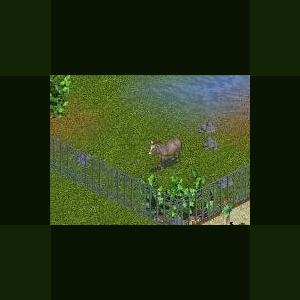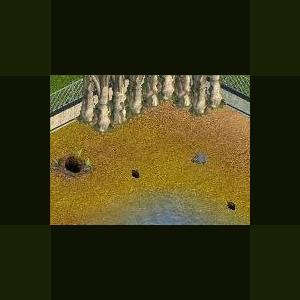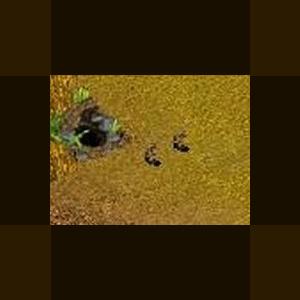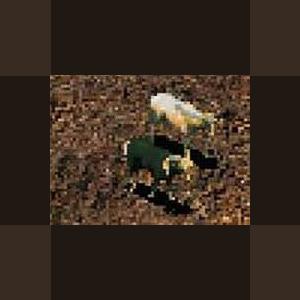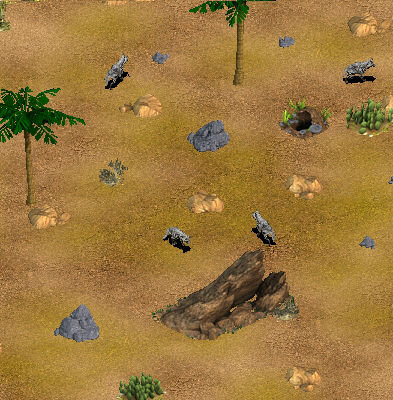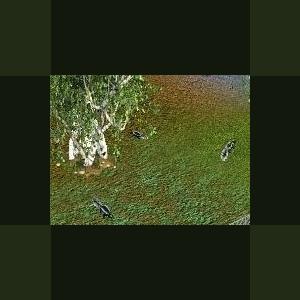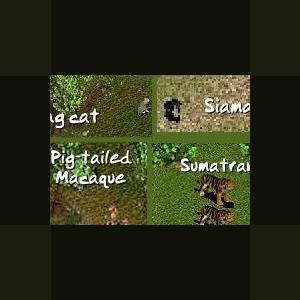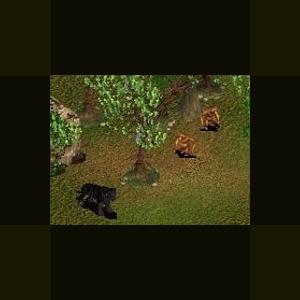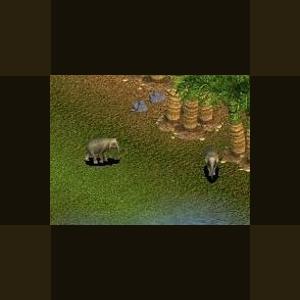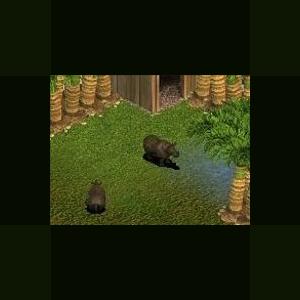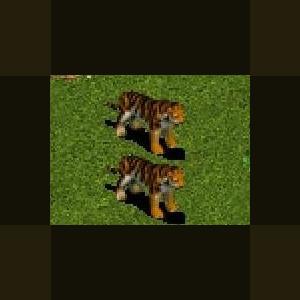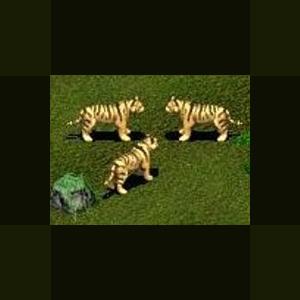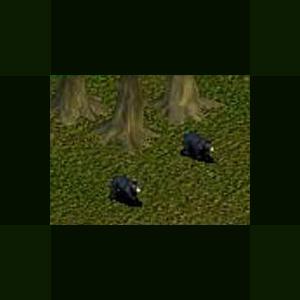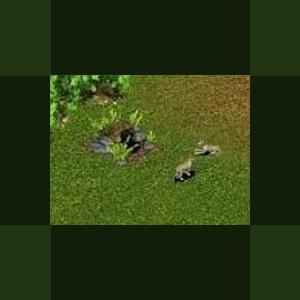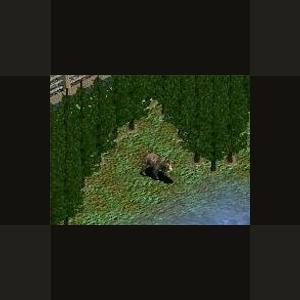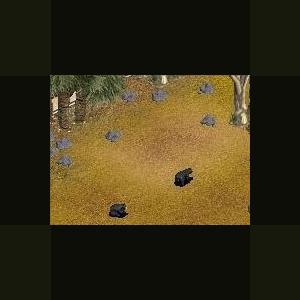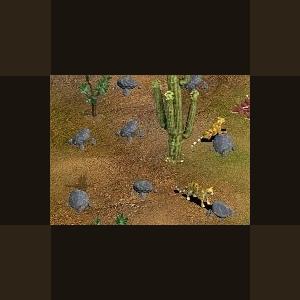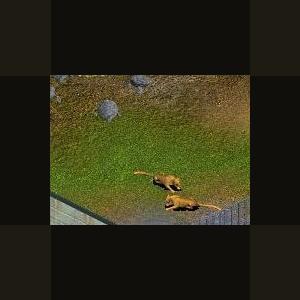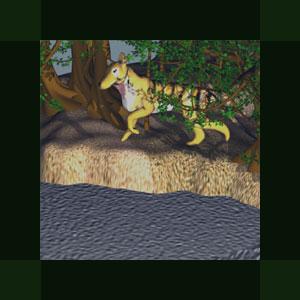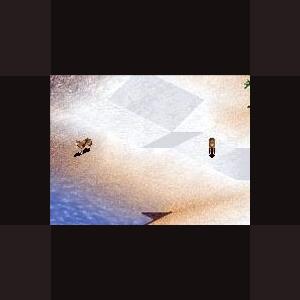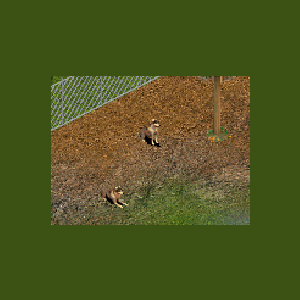279 files
-
Spanish Mustang by Sundance
By Guest
Spanish Mustang by Sundance
A beautiful Spanish Mustang
The true Spanish Mustang is a direct descendant of the horses brought to the New World by the early Spaniards. Confused by many with the feral horses currently managed by the Bureau of Land Management (B.L.M.), there is a vast difference in both appearance and ancestry. Columbus, on order from the Spanish throne, commenced bringing the first Spanish horses to the New World on his second voyage. Thereafter, each ship headed for the New World, by order of the Crown, carried breeding animals of choice Spanish stock. Breeding farms were set up in the Caribbean and subsequently in Mexico. Breeding farms such as the one operated in Sonora, Mexico by Padre Eusebio Kino, a Jesuit priest, produced stock, including horses, which were placed with each group of Christianized Indians as Kino expanded his efforts further and further north. The Apaches, never falling under the spell of the Church, ravaged and pillaged these little "visitas" taking stock at will. They also plundered deep into Mexico allegedly as far as Mexico City. Their goal - well-bred and trained Spanish horses from the Mexican estancias. Through trade of these valuable horses northward to other tribes the Apaches became one of the primary methods of spreading the Spanish horses over the west. Over the years horses escaped, were lost or stolen and many became feral, roaming all over the west. Eventually they numbered in the hundreds of thousands, closely related to the horses maintained by some of the Indian tribes; indeed, they were basically the same horses
Updated 2010-11-06
Just to save space with less in zip and smaller image.
Nothing new.
241 downloads
0 comments
Updated
-
Spectacled Bear by Khaydar
By Khaydar
Adopt a Spectacled Bear (Tremarctos ornatus) for your zoos.
Spectacled Bear description:
Minimum happiness needed for chance of breeding: 95.
Liked foliage:
Western Juniper Tree, Paper Birch Tree
Liked rock:
Large Rock, Small Rock - Medium, Small Rock - Small, Rock Formation
Animal can jump.
Animal can climb objects.
Animal can climb cliff.
Number of animals allowed per exhibit: 1-3 with 35 squares each.
A suitable exhibit for 2 of this animal has 70 squares containing terrain of:
41 Gray Stone, 7 Dirt, 11 Grass, 7 Snow, 4 Fresh Water
using 7 grid squares filled with 4 Paper Birch Tree most liked plant
and using 20 Small Rock - Small most liked rock.
Of the 70 squares, 8 nonadjacent squares should be elevated.
Preferred shelter: Rock Cave.
Other liked items:
Highland Rock
Credits to Aurora Designs for the model and mesh
Made by Khaydar
162 downloads
- living animal
- bear
- (and 1 more)
0 comments
Updated
-
Spectre Tiger by Sundance
By Guest
Spectre Tiger
Spectre tigers make their home in the borderline between tropical jungles and
lagoons. The male Spectre tiger can grow up to ten feet in length, from its
head to the end of its tail, with a shoulder width of up to three feet.
Although very large (weighing up to 575 pounds), the Spectre tiger is not the
largest tiger; its cousin, the Siberian tiger, is the world's largest cat.
When a Spectre tiger roars, you can hear it almost two miles away.
(plus 6 other paragraphs)
Animal Characteristics:
Habitat: Rainforest; Location: Southeast Asia
Minimum happiness needed for chance of breeding: 95.
Preferred shelter: Rock Cave.
Animal can swim in water terrain.
Animal can jump.
Animal can climb cliffs.
Exhibit Preferences:
Foliage:
Mangrove Tree, Elephant Ear Tree, Foxtail Palm Tree, Rainforest Bush
Rainforest Fern, Water Lily, Water Reed, Thouarsus Cycad Tree (DD)
Bald Cypress Tree (DD), Fern Bush (DD), Horsetail (DD), Leptocycas Tree (DD)
Williamsonia Tree (DD), Sea Anemone (MM), Barnacles (MM), Beach Grass (MM)
Brittle Sea Star (MM), Clam Bed (MM), Orange Cup Coral (MM)
Divercate Tree Coral (MM), Feather Duster Worm (MM), Fire Coral (MM)
Kelp (MM), Sea Lettuce (MM), Red Gorgonian (MM), Sargassum (MM)
Sand Dollar (MM), Sea Cucumber (MM), Sea Star (MM), Seaweed (MM)
Sea Grass (MM), Sea Sponge (MM), Stove Pipe Sponge (MM), Tube Worm (MM)
Purple Sea Urchin (MM), Fallen Rainforest Tree (ES), Rainforest Stump (ES)
Rafflesia (ES), Giant Ficus Tree (ES), Durian Tree (ES)
Rocks:
Large Rock, Small Rock - Medium, Small Rock - Small, Stone Ruins
Rainforest Rock - Formation, Medium Aquatic Rock (DD)
Small Ocean Floor Rock (MM), Medium Coral Formation (MM)
Large Ocean Floor Rock (MM), Medium Ocean Floor Rock (MM)
Large Coral Formation (MM), Iceberg (MM), Isle Rock (MM)
Mossy Rainforest Rock (ES), Limestone Rock (ES)
Exhibit Construction:
Number of animals allowed per exhibit: 2-6 with 35 squares for each adult.
Exhibit size (for 2 adults): 70 grid squares
Terrain (for exhibit with 70 grid squares):
24 Rainforest Floor, 7 Grass, 4 Dirt, 14 Sand, 21 Fresh Water
Foliage (for exhibit with 70 grid squares):
11 grid squares should contain foliage.
Foliage that would give the most happiness: Mangrove Tree
Since this is a small plant, greatest happiness will occur
if each of the 11 grid squares contains 4 of this plant.
Rocks (for exhibit with 70 grid squares):
11 Small Ocean Floor Rock (MM), which is its most liked rock.
Updated 2010-11-06
Just to save space with less in zip and smaller image.
Nothing new.
232 downloads
0 comments
Updated
-
Spotted Tailed Quoll by Jordan
By Guest
A small marsupial.
Updated 2010-11-06
Just to save space with less in zip and smaller image.
Nothing new.
233 downloads
0 comments
Updated
-
Springhare by Ghirin
By Guest
The springhare (Pedetes capensis) is a large rodent that resembles a small kangaroo. It is found south of the central African rainforests and in East Africa in savannah habitats.
Springhares are mainly nocturnal. They may be found singly or in pairs. Favored foods include grains and grasses.
Created by Ghirin 2005
Updated 2010-11-06
Just to save space with less in zip and smaller image.
Nothing new.
312 downloads
0 comments
Updated
-
Stones Sheep by Ghirin
By Guest
Stones Sheep
Author: Ghirin
http://www.zoo-tek.com/forums/index.php?download=153
Stone’s sheep (Ovis dalli stonei) is one of the two subspecies of North American thinhorn sheep; the other subspecies is Dall’s sheep (Ovis dalli dalli). The major distinction between Stone’s sheep and Dall’s sheep is color: Stone’s sheep may be grey, brown, or black while Dall’s sheep is well known for its white fur. In both subspecies, the horns of the ram are less massive than those of the bighorn sheep, thus the name thinhorn.
Although Stone's sheep are well-adapted to a range of elevations and temperatures, they prefer steep, rocky regions and are attracted by open alpine meadows containing a variety of grasses and succulent, low-growing vegetation. In captivity, the natural diet of these sheep is supplemented with alfalfa and grain pellets. In the wild, these animals will eagerly seek out mineral licks containing salt.
Gregarious animals, Stone's sheep sometimes gather in herds of over 100 individuals. In the wild, herds consist of a dominant ewe and a mixture of ewes, yearlings, and lambs. Rams travel in small bands of their own, joining the females during the mating season.
Stone's sheep are very alert and, in addition to possessing keen hearing and a good sense of smell, have remarkable vision that allows them to judge distances accurately when jumping and locating footholds. They can spot other animals moving from up to a mile away. Stone's sheep hooves are hard on the outside and soft on the inside, and so act as shock absorbers, contributing to the sheep's ability to rapidly scramble up rocky terrain.
Stone’s sheep is less abundant than Dall’s sheep and has a smaller distribution, ranging from the British Columbian/Yukon border into the central Yukon.
Created by Ghirin 2003
Updated 2010-11-06
Just to save space with less in zip and smaller image.
Nothing new.
279 downloads
0 comments
Updated
-
Striped Hyena by Khaydar
By Khaydar
A striped Hyena for your zoos. It lives in an arid environment and likes caves/burrows.
216 downloads
Updated
-
Striped Skunk by Jordan
By Guest
The striped skunk is a North American carnivore well known for dousing its enemies with smelly spray.
The skunk is Jordan's first animal with from-scratch animations, with the original skunk images from Genki.
Updated 2010-11-06
Just to save space with less in zip and smaller image.
Nothing new.
883 downloads
0 comments
Updated
-
Sumatran Animals by Tek Design
By Guest
Four Sumatran animals:
Fishing cat, Siamang, Pigtailed Macaque, and Sumatran Tiger
Updated 2010-11-06
Just to save space with less in zip and smaller image.
Nothing new.
390 downloads
0 comments
Updated
-
Sumatran Cryptids by Jordan
By Guest
Sumatran Cryptids by Jordan
The Orang Pendek and Cigau cryptids of Sumatra, combined into one ztd.
Cigau
The Cigau is a Sumatran mystery wild cat described as a cross between a lion and a tiger. Described as being slightly smaller, but apparently more heavily built, than the Sumatran tiger, they are greatly feared by the hunters of Kerinci--the only animal to produce such a reaction. They claimed the cigau attacks without provocation. "Cigau hates man".
Animal recolor and programming by Jordan, stat change and research by Genkicoll.
Orang Pendek
The orang pendek is an orangutan-like cryptid from the island of Sumatra.
The orang pendek is fully compatible with the orangutan for those inclined to making mixed exhibits.um
Updated 2010-11-06
Just to save space with less in zip and smaller image.
Nothing new.
212 downloads
0 comments
Updated
-
Sumatran Elephant by Jordan
By Guest
Sumatran elephants are the smallest of the Asian elephants. Males rarely develop long tusks, while those of adult females may be so short that they are hidden by the upper lip. This elephant can live up to 70 years in captivity, less in the wild.
The endangered Sumatran elephant (Elephas maximus sumatranus) is the smallest (and perhaps oldest) of the Asian subspecies and is unique to the island of Sumatra. It has been protected in Indonesia since 1931. Population surveys conducted in the 1980’s estimated that only 2800 – 4500 wild elephants remained. It is likely that even fewer survive in today’s fragmented forests. The term "pocket elephants" was originally coined to refer to their diminutive size, and also reflects their survival today in the few remaining "pockets" of lowland rainforest.
The combined effects of road development, logging, conversion of forest to agriculture, and human resettlement have contributed to the loss of thousands of hectares of elephant habitat. As habitat shrinks, elephants are forced into conflict with humans. The destruction of crops and houses results in injuries and deaths of both humans and elephants.
Villagers faced with raiding elephants demanded that the government resolve the problem. To these villagers, the elephants were just dangerous crop-raiding pests. Occasionally, angry villagers have poisoned elephants. Unlike other Asian countries, with strong elephant traditions, elephants are not revered in Indonesia.
The government of Indonesia began establishing Elephant Centers on Sumatra in 1986 in an attempt to relieve human-elephant conflicts. Today there are six Centers that hold approximately 400 elephants.
Updated 2010-11-06
Just to save space with less in zip and smaller image.
Nothing new.
366 downloads
0 comments
Updated
-
Sumatran Rhino by Jordan
By Guest
Also known as the "hairy rhino," the Sumatran rhinoceros is among the world's most endangered mammals..
In the past 10 years, almost 50 percent of these rhinos have been lost to poaching. Now less than 300 survive in isolated pockets in Southeast Asia. Besides being the only rhino with hair on its body, the Sumatran rhino is also the only two-horned species in Asia. It has rarely been seen because of the dense rainforest and moss forest where it lives. This rhino is considered a descendant of the prehistoric woolly rhinoceros, depicted in Stone Age cave drawings in Europe.
Updated 2010-11-06
Just to save space with less in zip and smaller image.
Nothing new.
501 downloads
0 comments
Updated
-
Sumatran Rhinoceros by Khaydar
By Khaydar
Adopt a Sumatran Rhinoceros (Dicerorhinus sumatrensis) for your zoos.
Sumatran Rhinoceros description:
Minimum happiness needed for chance of breeding: 90.
Liked foliage:
Rainforest Fern, Mangrove Tree, Foxtail Palm Tree
Liked rock:
Large Rock, Small Rock - Medium, Small Rock - Small
Animal can climb objects.
Number of animals allowed per exhibit: 1-2 with 50 squares each.
A suitable exhibit for 2 of this animal has 100 squares containing terrain of:
80 Rainforest Floor, 5 Dirt, 10 Grass, 5 Fresh Water
using 19 grid squares filled with 4 Foxtail Palm Tree most liked plant
and using 8 Small Rock - Small most liked rock.
Preferred shelter: Large Stable.
Other liked items:
Waterfall Rock,
Credits to Eryel for the model and mesh
Made by Khaydar
169 downloads
- living animal
- rhinoceros
- (and 1 more)
Updated
-
Sumatran Tiger by LAwebTek
By Guest
Sumatran Tiger
Author: LAwebTek
The Sumatran tiger (Panthera tigris) is found only on the Indonesian island of Sumatra in habitat that ranges from lowland forest to sub mountain and mountain forest including some peat moss forests. According the the Tiger Information Center and the World Wildlife Fund there are no more than 500 of these tigers left in the wild with some estimates considerably lower.
Indonesia has well over 300 different kinds of plant life. To achieve a similar effect in the game, all of the following may be used in the Samatran tiger exhibit: Mossy rainforest rock, tall grass, Mangrove tree, Orcid tree, Elephant Ear tree, Rafflesia, Giant ficus tree, Foxtail palm, Williamsonia tree, rainforest stump, Fallen rainforest tree, Ulma tree, Leptocycas tree, Llala palm, Kapok tree, Fern bush, Thouarsus cyad, Bonsai, Snowbell tree, Japanese maple, Chinese fir, Dawn redwood, Norfolk island tree, Palm tree and Bamboo. The Samatran tiger can also swim in a marine tank if attached to its exhibit.
Updated 2010-11-06
Just to save space with less in zip and smaller image.
Nothing new.
333 downloads
0 comments
Updated
-
Sumatran Tiger by Moondawg
By Guest
Sumatran Tiger
The Sumatran tiger (Panthera tigris sumatrae) is a subspecies of tiger found on the Indonesian island of Sumatra. The wild population is estimated at between 400 and 500 animals, occurring predominantly in the island's national parks. Recent genetic testing has revealed the presence of unique genetic markers, indicating that it may develop into a separate species, if it is not made extinct. This has led to suggestions that the Sumatran tiger should have greater priority for conservation than any other subspecies. Habitat destruction is the main threat to the existing tiger population (logging continues even in the supposedly protected national parks), but 66 tigers were recorded as being shot and killed between 1998 and 2000—nearly 20% of the total population.
The Sumatran tiger is the smallest of all extant tiger subspecies. Male Sumatran tigers average 234 cm (7 feet, 8 inches) in length from head to tail and weigh about 136 kg (300 pounds). Females average 198 cm (6 feet, 6 inches) in length and weigh about 91 kg (200 pounds). Its stripes are narrower than other subspecies of tigers' stripes, and it has a more bearded and maned appearance, especially the males. Its small size makes it easier to move through dense rain forests. It has webbing between its toes that, when spread, makes Sumatran tigers very fast swimmers. It has been known to drive hoofed prey into the water, especially if the prey animal is a slow swimmer.
Sumatran Tigers commonly prey on larger ungulates, like wild boar, tapir and deer, and sometimes also smaller animals, like fowl, and fish. Orangutans could be prey, but since they spend a minimal amount of time on the ground, tigers rarely catch one.
Analysis of DNA is consistent with the hypothesis that the Sumatran tigers have been isolated after a rise in sea level at the Pleistocene to Holocene border about 12.000-6.000 years ago from other tiger populations. In agreement with this evolutionary history, the Sumatran tiger is genetically isolated from all living mainland tigers, which form a distinct group, closely related among each other.
The Sumatran tiger is only found naturally in Sumatra, a large island in western Indonesia. It lives anywhere from lowland forests to mountain forest and inhabits many unprotected areas. Only about 400 live in game reserves and national parks, The largest population of about 110 tigers lives in Gunung Leuser National Park. Another 100 live in unprotected areas that will soon be lost and the rest are spread out in areas that are quickly being lost to agriculture. The reserves are not safe because, despite conservation efforts, many tigers are killed by poachers each year.The Sumatran tiger is found only on the Indonesian island of Sumatra in habitat that ranges from lowland forest to sub mountain and mountain forest including some peat moss forests. According the the Tiger Information Center and the World Wildlife Fund there are no more than 500 of these tigers left in the wild with some estimates considerably lower.
The continuing loss of habitat is intensifying the crises to save this tiger.
In 2007, the Indonesian Forestry Ministry and Safari Park established cooperation with the Australia Zoo for the conservation of Sumatran tigers and other endangered species. The cooperation agreement was marked by the signing of a Letter of Intent on 'Sumatran tiger and other Endangered Species Conservation Program and the Establishment of a Sister Zo Relationship between Taman Safari and Australia Zoo' at the Indonesian Forestry Ministry office on July 31, 2007. The program includes conserving Sumatran tigers and other endangered species in the wild, efforts to reduce conflicts between tigers and humans, and rehabilitating Sumatran tigers and reintroducing them to their natural habitat.
Updated 2010-11-06
Just to save space with less in zip and smaller image.
Nothing new.
359 downloads
0 comments
Updated
-
Sun Bear by Ghirin
By Guest
Sun Bear
Author: Ghirin
The sun bear (Ursus malayanus, Helarctos malayanus) is the smallest species of living bear. It is native to the forests of Southeast Asia, including China, Thailand, Malaysia, Indonesia, and Vietnam. These bears are excellent climbers and spend the day sleeping and sunbathing in trees; they hunt at night.
Sun bears have black fur with a characteristic light-colored mark on the chest. The soles of their feet are free of fur to help in climbiing and they have large, curved claws for climbing, openning insect nests, and defense. These bears also use their long canine teeth to tear open trees to get at the insects hidden inside.
Sun bears eat a wide variety of foods, including insects, friut, honey, eggs, and small vertebrates.
They are solitary animals, with the only regular social group being that of mother and cubs.
Created by Ghirin 2003
Updated 2010-11-06
Just to save space with less in zip and smaller image.
Nothing new.
373 downloads
0 comments
Updated
-
Sun Bear by Khaydar
By Khaydar
Adopt a Sun Bear (Helarctos malayanus) for your zoos.
Sun Bear description:
Cannot be used in original Zoo Tycoon: Requires DD
Minimum happiness needed for chance of breeding: 95.
Liked foliage:
Rainforest Fern, Foxtail Palm Tree, Mangrove Tree, Durian Tree (ES)
Liked rock:
Large Rock, Small Rock - Medium, Small Rock - Small, Rainforest Rock
Stone Ruins
Animal can jump.
Animal can climb objects.
Animal can climb cliff.
Number of animals allowed per exhibit: 1-3 with 35 squares each.
A suitable exhibit for 2 of this animal has 70 squares containing terrain of:
42 Rainforest Floor, 14 Dirt, 14 Grass
using 14 grid squares filled with 4 Foxtail Palm Tree most liked plant
and using 20 Small Rock - Small most liked rock.
Of the 70 squares, 1 nonadjacent squares should be elevated.
Preferred shelter: Rock Cave.
Other liked items:
Orangutan Jungle Gym (ES), Orangutan Rope Swing (ES)
Credits to DutchDesigns for the model and mesh
Made by Khaydar
159 downloads
- living animal
- bear
- (and 1 more)
0 comments
Updated
-
Swift Fox by Ghirin
By Guest
The swift fox (Vulpes velox) is found in the open grasslands and dry regions of North America. It is nocturnal, preferring to stay in underground burrows during the day.
Swift foxes prey on rodents and rabbits and live in monogamous pairs.
Reference:
http://www.lioncrusher.com/animal.asp?animal=33
Created by Ghirin 2008
Updated 2010-11-06
Just to save space with less in zip and smaller image.
Nothing new.
307 downloads
0 comments
Updated
-
Syrian Bear by Ghirin
By Guest
Syrian Bear
Author: Ghirin
Syrian bears are small-sized brown bears native to the Levant and southwestern Asia. Very few exist in the wild and the species maybe extinct there; however, Syrian bears are found in zoos around the world.
Many authorities do not consider the Syrian bear a true subspecies, but it is sometimes referred to as Ursus arctos syriacus.
The Syrian bear is thought to be the bear mentioned in the Bible.
Updated 2010-11-06
Just to save space with less in zip and smaller image.
Nothing new.
256 downloads
0 comments
Updated
-
Tasmanian Devil by Jordan
By Guest
Tasmanian devils are fierce carnivorous marsupials that typically live alone.
Geographic Range
Currently Sarcophilus laniarius is found only in Tasmania, although fossil evidence suggests that it once occupied much of the Australian mainland. It has been suggested that its absence in many previously occupied areas can be explained by competition with the introduced dingo in Australia. (Nowak, 1991)
Habitat
Tasmanian devils are numerous throughout Tasmania except in areas where there has been extensive habitat fragmentation and deforestation. They are most numerous in coastal heath and rangeland areas where agricultural practices maintain a constant supply of carrion. They also occur in open, dry schlerophyll forest and mixed schlerophyll rainforest. Their dens typically are located in hollow logs, caves, or burrows. (DPIWE and Nature Conservation Branch, 2005; Nowak, 1991)
Physical Description
Mass
4 to 12 kg
(8.8 to 26.4 lbs)
Length
525 to 800 mm
(20.67 to 31.5 in)
Tasmanian devils are stocky with a brownish black pelage. They have a white throat patch, white spots on their sides and backside, and a pinkish snout. The head is massive with well developed jaw muscles. Molar teeth are heavy and adapted for their role in crushing bone and tearing through muscle and thick skin. Females are slightly smaller than males. Body size varies considerably with diet, habitat, and age. Large males may reach 12 kg and 30 cm at the shoulder. Total length ranges from 525 to 800 mm and tail length from 230-300 mm. Male weight ranges from 5.5 to 12 kg and female weight from 4.1 to 8.1 kg. Fat storage occurs in the tail, as in many dasyurids. Females have four mammae and, unlike many other dasyurids, the marsupial pouch is completely closed when breeding. (DPIWE and Nature Conservation Branch, 2005; Nowak, 1991)
Reproduction
Breeding interval
Tasmanian devils breed once yearly.
Breeding season
Tasmanian devils breed in April.
Number of offspring
4 (high); avg. 2-3
Gestation period
21 days (average)
Time to weaning
5 to 6 months
Time to independence
8 months (average)
Age at sexual or reproductive maturity (female)
2 years (average)
Males compete for access to breeding females. Females are only temporarily subdued by a male for mating, there is no longer term association of males and females. (DPIWE and Nature Conservation Branch, 2005)
Tasmanian devils are monestrous. Most mating takes place in March and the young are born in April after a gestation period of 21 days. Litter size is usually 2-3, although 4 mammae are available and 4 young are possible. The young then travel to the pouch where they remain for 4 months. By 5-6 months old the young are completely weaned, becoming independent in December. Females become sexually mature at two years old. (DPIWE and Nature Conservation Branch, 2005; Nowak, 1991)
Females nurse and protect their offspring in their pouch during most of their development. After weaning the young begin to disperse from their natal range. (DPIWE and Nature Conservation Branch, 2005; Nowak, 1991)
Lifespan/Longevity
Tasmanian devils most often live to a maximum of 5 years old in the wild. Most young die immediately after dispersing out of their natal range as a result of food scarcity or competition. They may live 7 to 8 years. (DPIWE and Nature Conservation Branch, 2005; Nowak, 1991)
Behavior
Tasmanian devils are nocturnal and usually solitary. Occasionally, when individuals congregate at food sources, such as carrion, they interact aggressively but they are not territorial. When fighting, Tasmanian devils vocalize with growls, screeches, and vibratos. There also seems to be a learned dominance hierarchy, at least in captive situations.
Both males and females make nests of bark, grass and leaves which they inhabit throughout the day. They may be seen sunbathing during the day in quiet areas. (DPIWE and Nature Conservation Branch, 2005; Nowak, 1991)
Home Range
Tasmanian devils stay within a relatively small home range, traveling an average of 3.2 km in a night. (Nowak, 1991)
Communication and Perception
Tasmanian devils have keen senses of smell, sight, touch, and taste. They communicate through a wide variety of vocalizations and physical cues, such as yawning and raising their tails. Tasmanian devils are regarded with some awe because of the blood-curdling shrieks and growls they use, particularly when a group is scavenging a carcass. (DPIWE and Nature Conservation Branch, 2005)
Food Habits
Tasmanian devils have been considered livestock predators. In reality, these marsupials take most of their large prey, such as wombats, wallabies, sheep, and rabbits, in the form of carrion. Tasmanian devils are efficient scavengers, eating even bones and fur. Tasmanian devils may have depended on carrion left from Tasmanian wolf kills in historical times. Other food items, such as insects, insect larvae, snakes, and small amounts of vegetation, are taken when encountered. Tasmanian devils forage in a slow, lumbering manner, using their sense of smell to find food at night. They are famous for their rowdy communal feeding, which is accompanied by aggression and loud vocalizations. (DPIWE and Nature Conservation Branch, 2005; Nowak, 1991)
Created by Jordan for Zoo Tek Phoenix
2008
Updated 2010-11-11
Just to save space with less in zip and smaller image.
Nothing new.
504 downloads
Updated
-
Texas Ocelot by Kiger Cowgirl
By Guest
TX Ocelot by Kiger Cowgirl
The Texas ocelot (Leopardus pardalis albenscens) is the northernmost ocelot subspecies, They can be found in southern Texas and northern Mexico. Rather than the traditional rainforest habitat, these ocelots live in arid scrublands and semideserts.
Updated 2010-11-11
Just to save space with less in zip and smaller image.
Nothing new.
303 downloads
0 comments
Updated
-
Texas Panther by Kiger Cowgirl
By Guest
Texas Panther by Kiger Cowgirl
The Texas panther is a subspecies of moutain lion from, you guessed it! Texas.
The Texas panther (Puma concolor stanleyana), also known as the Texas cougar, is one of the most well-known of the moutain lion subspecies. Though now they mainly live in the desert moutain ranges of the Trans-Pecos regions, thye once occured throughout the state. This subspecies is now being used to add new bloodlines to the critically endangered Florida panthers.
Updated 2010-11-11
Just to save space with less in zip and smaller image.
Nothing new.
297 downloads
0 comments
Updated
-
Thylacine by Taz (Tasmanian_tiger)
By Fern
Thylacine
Author : Taz (Tasmanian_tiger)
Category : Believed to be an extinct animal, Marsupial
Updated: July 15, 2013 by Jay to correct 1 animation view, to add a bark animation from images of the growl animation, to remove unnecessary files and configuration lines, to correct configuration mistakes done by the APE program concerning sounds, and to make some minor adjustments to the animal info.
Updated : August 10, 2013 by Jay to make it like the Thylacine Family Rock and Thylacine Rock as much as its most liked in-game rock.
Current ztd date: August 10, 2013
Compatibility : All Game Versions
Thylacinus cynocephalus, which is the only recent genus and species of the marsupial family.
Thylacinidae, was apparently found only on the island of Tasmania within historic times. Since the beginning of the European occupation, there have been many reports from the Australian mainland of sightings of animals bearing a close resemblance to the thylacine. However, none of these reports have been positively confirmed as of yet (Ride 1970; Heuvelmans 1958). During late Pleistocene and the early Holocene times, the genus is known to have been widespread across Australia and nearby New Guinea. The most recent subfossilized remains from the Australian mainland date back to just over 3,000 years before present. It is widely believed that the main reason for the disappearance of Thylacinus cynocephalus from mainland Australia is due to the introduction of the domestic dog by human immigrants from Asia. This introduction may have taken place as much as 10,000 years ago, or possibly earlier (Archer 1974a; Partridge 1967). These dogs formed feral populations which created ecological competition with the thylacine. Until the arrival of European settlers in the 18th century, thylacines in Tasmania were quite safe because the feral Australian dog (dingo) had never become established there.
746 downloads
0 comments
Updated
-
Tibetan Fox by BigCatKeeper
By Guest
Tibetan Fox
Author: BigCatKeeper
The Tibetan fox lives in Tibet, the Sutlej Valley in northwest India, and the Mustang district in northern Nepal. They live in the uplands of its range.
They are small foxes, with an elongated muzzle. They are rusty yellow in colour, with grey on the sides of the body, and white on the face and under body. They have acute hearing. Their teeth are well-developed, especially the canines, which are longer than in most other foxes. They have dense fur to protect them from high winds.
The Tibetan fox eats mostly rodents. They live in burrows in rocks on the plateaus. The Tibetan fox lives in pairs which hunt together. Mating season is in February, and after a gestation period of 50-60 days, 2-5 kits are born in a den. There is little information on this fox species.
These foxes tend to avoid areas where humans live. They are trapped for their fur in Tibet, where hats are made from their pelts.
Tibetan Fox created by Bigcatkeeper
Idea from Professorpaul
Updated 2010-11-11
Just to save space with less in zip and smaller image.
Nothing new.
292 downloads
0 comments
Updated
-
Tibetan Wolf by Ryno
By Guest
Tibetan Wolf by Ryno
The Tibetan wolf is a grey wolf species (Canis lupus laniger) found in parts of Central China, southwest-Russia, Manchuria, Tibet and the Himalayan regions of India, Nepal and Bhutan.
Updated 2010-11-11
Just to save space with less in zip and smaller image.
Nothing new.
265 downloads
0 comments
Updated

